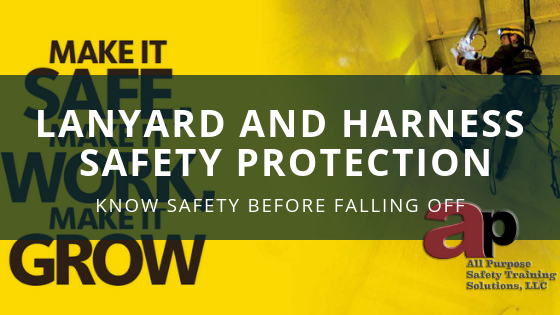Lanyard and Harness Safety Heights Protection Gear
Lanyard and Harness Safety
AP Safety Training Solutions provides lanyard and harness safety protection training programs. Fall arrest gear is used and trusted every day by industries such as domestic and industrial construction, maintenance, arbor, utility services (water, power, and telecommunications), mining, the military and rescue, and emergency services.
Our range of height safety and rescue programs enables superior performance and incomparable safety in elevated conditions including vertical rescue, confined space entry, work positioning, work restraint, rope access, rescue, fall arrest, and emergency response.
Lanyard and Harness Safety, ladder safety, heights, and protective gear
OSHA has developed this webpage to provide useful details on fall protection to workers and employers.
Why is fall protection important?
Falls are among the most common causes of serious work-related injuries and deaths. Employers need to prepare the workplace to prevent employees from falling away from overhead platforms workstations or into holes in the ground and walls.
What can be done to reduce falls?
Employers must set up the workplace to prevent workers from falling off of overhead platforms, raised workstations or into holes in the floor and walls. OSHA demands that fall protection is offered at elevations in long shoring operations, six feet in the building industry and eight feet in shipyards, five feet of four toes in general industry offices. In addition, OSHA requires that fall protection is provided when working over machinery and harmful equipment, regardless of the falling space.
To prevent workers from being injured from falls, companies need to:
- Guard every floor hole in which a worker can accidentally walk (using a railing and toeboard or a floor hole cover).
- Provide a guardrail and toe-board around every elevated open sided stage, floor or runway.
- Regardless of elevation, when a worker could fall into or onto dangerous machinery or equipment (such as a vat of acid or a conveyor belt) companies need to provide guardrails and toe-boards to prevent workers from falling and becoming injured.
- Other means of fall protection which could be required on certain jobs include safety line and harness, safety nets, stair railings, and hand railings.
OSHA requires employers to:
- Provide working conditions which are free of known dangers.
- Keep flooring in work areas in a clean and, so far as possible, a dry condition.
- Select and supply needed personal protective equipment at no charge to employees.
- Train workers about job hazards in a speech which they can understand.
Contact us for more information regarding fall protection programs. Let AP Safety Training Solutions help get you or your team training along with the certification required for you. Contact us today at (888) 501-1355
Read Article: Reasons to get your safety program for your business
Read Article: Reasons to get your safety program for your business




safety course in Chennai
ReplyDelete